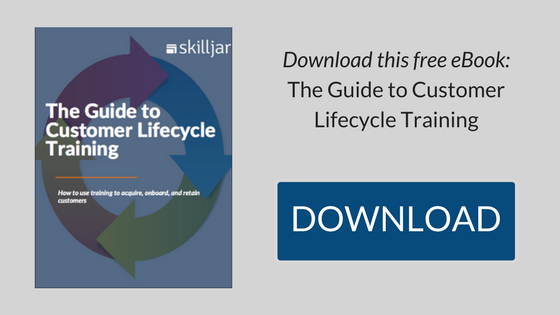In the previous 2 blog posts, we introduced customer lifecycle training and how it can be applied during the marketing (or lead generation) phase. Now we turn our attention to the post-sales phase, starting with onboarding.
After a lead has converted to a customer, the next step in the customer lifecycle is onboarding. By leveraging your training program at this point in the lifecycle, you can create a smooth onboarding experience for your customer's initial success.

The onboarding experience can set the tone for the rest of the customer and company relationship. Training at this stage of the lifecycle assists new customers with launching for initial success, a critical step to achieving long-term product adoption, usage, and renewals.
While virtually every organization can benefit from offering training during customer onboarding, there are a few use cases that are especially relevant.
- Pay-for-performance products. Faster onboarding time is crucial to start generating revenue.
- Products which require group adoption. Providing training for a team that will be collaborating on a product, such as project management software, is the best way to ensure successful adoption for team success.
- Business-critical products. When accurate adoption is crucial to customer success, such as implementing a new accounting package or analytics software, onboarding training is imperative to ensure a smooth transition.
- Products that target individuals or SMBs. With a large customer base, a scalable and self-paced training option is important to accelerate customer adoption, maintain quality, deepen usage, and manage support costs.
- Complex products. The more complex the onboarding process, the more that customers will need a strong training program.
For customer onboarding, you'll be collaborating with account managers and customer success managers. Training might be free or paid depending on your organization. Consider categorizing courses by role, such as for administrators and for end-users, to provide an optimal learning experience. Measure success by the speed, effectiveness, and satisfaction of the onboarding process for customers who participate in training.
In next week's article, we'll be focused on ongoing success and support during the customer lifecycle. Can't wait till next week? Download The Guide to Customer Lifecycle Training today!

